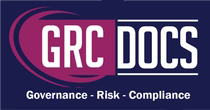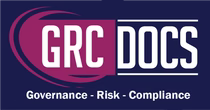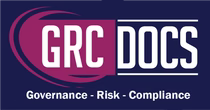NIST SP 800-53 Control Mapping Spreadsheet: Full Guide
Introduction
Understanding the importance of this document and effectively utilizing it can significantly enhance an organization's ability to manage cybersecurity risks. The NIST SP 800-53 provides a structured approach to security that can be adapted to various organizational needs, ensuring that both public and private entities can benefit from its comprehensive framework. By using a control mapping spreadsheet, organizations can demystify the process of aligning with NIST standards, ultimately leading to more effective and efficient security management. NIST SP 800-53 is a publication by the National Institute of Standards and Technology (NIST) that provides a catalog of security and privacy controls for all U.S. federal information systems except those related to national security. The goal of this publication is to help organizations manage information security and privacy risks. It is a comprehensive document that covers a wide range of controls, making it an essential reference for anyone involved in cybersecurity management.

Why Are NIST Security Standards Important?
The NIST security standards are crucial as they offer a comprehensive framework that organizations can use to enhance their security posture. By implementing these standards, organizations can protect against threats, ensure data integrity, and maintain confidentiality. These standards are not just technical guidelines; they embody best practices that have been developed over years of research and practical application in the field of cybersecurity.
The controls outlined in NIST SP 800-53 are designed to be flexible and can be tailored to meet the specific needs and risk profiles of different organizations. This adaptability makes them applicable not just to government agencies but also to private sector companies looking to bolster their cybersecurity defenses. Moreover, by adhering to these standards, organizations can demonstrate their commitment to security to stakeholders, customers, and partners, thereby enhancing their reputation and trustworthiness.
What Is A Control Mapping Spreadsheet?
A control mapping spreadsheet is a tool that helps organizations align their existing security controls with the standards set out in NIST SP 800-53. This mapping process is essential in identifying gaps in current security measures and ensuring comprehensive coverage of all necessary controls. The spreadsheet acts as a bridge between an organization's current security posture and the robust standards outlined by NIST, facilitating a smoother transition towards compliance.
Benefits of Using a Control Mapping Spreadsheet
-
Streamlined Compliance: The spreadsheet simplifies the process of ensuring compliance with NIST standards by providing a clear comparison between existing controls and NIST requirements. This clarity helps reduce the complexity and time involved in compliance efforts, allowing organizations to focus more on strategic security initiatives.
-
Gap Analysis: It helps organizations identify areas where their current security measures fall short, enabling them to prioritize improvements. By clearly highlighting deficiencies, organizations can allocate resources more effectively to address these gaps, thereby enhancing their overall security posture.
-
Resource Optimization: By clearly outlining which controls are already in place and which need to be implemented, organizations can allocate resources more effectively. This not only helps in optimizing costs but also ensures that efforts are directed towards the most critical areas, maximizing the impact of security investments.
-
Continuous Improvement: The spreadsheet serves as a living document, allowing organizations to continuously update and improve their security posture as new threats emerge and standards evolve. This dynamic nature ensures that the organization's security strategies remain relevant and effective in the face of changing cybersecurity landscapes.
Creating Your NIST SP 800-53 Control Mapping Spreadsheet
Creating a control mapping spreadsheet involves several key steps. This process requires a meticulous approach to ensure that all aspects of an organization's security framework are aligned with NIST standards. The following steps provide a detailed guide to effectively create and use a control mapping spreadsheet.
Step 1: Gather Existing Security Controls
Start by compiling a list of all current security controls your organization has in place. This list will serve as the baseline for your mapping process. Having a comprehensive understanding of your existing controls is crucial, as it provides the foundation upon which you will build your mapping efforts.
Ensure that this list includes all technical, administrative, and physical controls, as well as any policies and procedures that are part of your security framework. This comprehensive approach will help you capture the full scope of your current security posture.
Step 2: Understand NIST SP 800-53 Controls
Familiarize yourself with the controls outlined in NIST SP 800-53. The publication is divided into families, such as access control, audit and accountability, and incident response, each containing specific controls. Understanding these controls in detail is essential to effectively map them to your existing security measures.
Take the time to review each control family and identify the specific controls that are relevant to your organization. This will help you focus your efforts on those areas that are most critical to your security objectives.
Step 3: Map Existing Controls to NIST Standards
Using your compiled list, begin mapping each existing control to the corresponding NIST SP 800-53 control. This process will help you identify any overlaps or gaps. Mapping is an iterative process that may require multiple reviews to ensure accuracy and completeness.
During this step, it is important to document any discrepancies or areas where controls do not fully align with NIST standards. This documentation will be invaluable during the gap analysis phase.
Step 4: Conduct a Gap Analysis
Once mapping is complete, conduct a gap analysis to identify where your current controls fall short of NIST standards. This analysis will highlight areas that require additional attention and resources. A thorough gap analysis is essential to prioritize your efforts and ensure that you address the most critical deficiencies first.
Consider using qualitative and quantitative measures to assess the significance of each gap. This will help you develop a more informed and strategic approach to remediation.
Step 5: Develop an Action Plan
Based on your gap analysis, develop an action plan to address any deficiencies. Prioritize controls based on risk and impact to ensure critical areas are addressed first. An effective action plan should include specific steps, responsible parties, and timelines for implementation.
Engage stakeholders from across the organization to ensure that your action plan is realistic and achievable. Their input can provide valuable insights and help secure the necessary support and resources for successful implementation.
Step 6: Review and Update Regularly
Cybersecurity is a dynamic field, and the threat landscape is constantly changing. Regularly review and update your control mapping spreadsheet to ensure it remains relevant and effective. Set a schedule for periodic reviews and updates, and integrate feedback from security incidents and audits to continuously improve your security posture.
In addition to regular reviews, consider conducting ad-hoc updates in response to significant changes in the threat landscape or organizational priorities. This proactive approach will help you stay ahead of emerging threats and maintain compliance with evolving standards.
Implementing NIST Risk Management
Beyond control mapping, effective risk management is crucial in implementing NIST SP 800-53. Risk management involves a systematic process of identifying, assessing, and mitigating risks to an organization's information systems. A comprehensive risk management strategy not only supports compliance efforts but also enhances overall organizational resilience.
Effective risk management requires a holistic approach that considers all aspects of an organization's operations. This includes identifying potential threats, assessing their likelihood and impact, and developing strategies to mitigate or eliminate these risks. By integrating risk management with control mapping efforts, organizations can ensure a more cohesive and effective security strategy.
Steps in NIST Risk Management
-
Risk Assessment: Identify and evaluate risks to the organization's information assets. This involves understanding potential threats, vulnerabilities, and the potential impact on the organization. A thorough risk assessment provides the foundation for informed decision-making and strategic planning.
-
Risk Mitigation: Develop strategies to reduce or eliminate identified risks. This may involve implementing new controls, enhancing existing measures, or accepting certain risks based on a cost-benefit analysis. Effective risk mitigation strategies are tailored to the organization's specific context and risk appetite.
-
Monitoring and Review: Continuously monitor risk levels and the effectiveness of mitigation strategies. Regular monitoring ensures that risks are managed proactively and that mitigation efforts remain effective over time. This ongoing process allows organizations to adapt to changes in the threat landscape and organizational priorities.
-
Communication and Reporting: Maintain clear communication about risks and mitigation efforts to stakeholders. Transparent reporting helps build trust and ensures that all relevant parties are informed and engaged in risk management efforts. Effective communication is critical to securing the necessary support and resources for successful risk management.
Conclusion
A NIST SP 800-53 control mapping spreadsheet is a vital tool for organizations striving to achieve compliance with NIST security standards. By systematically mapping existing controls to NIST guidelines, organizations can identify gaps, optimize resources, and strengthen their security posture. This structured approach not only simplifies compliance efforts but also enhances overall cybersecurity effectiveness.
In a world where cyber threats are continually evolving, adhering to robust security frameworks like NIST SP 800-53 is not just a regulatory requirement but a critical component of protecting your organization's assets and reputation. Regularly updating your control mapping spreadsheet and implementing a comprehensive risk management strategy will ensure your organization remains resilient in the face of emerging threats. These efforts demonstrate a commitment to security that can enhance stakeholder confidence and support long-term organizational success.






